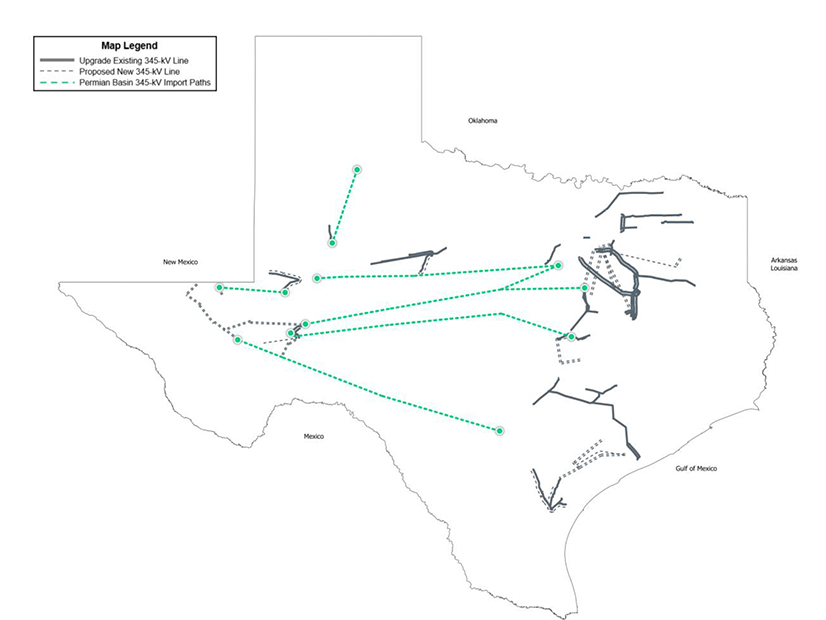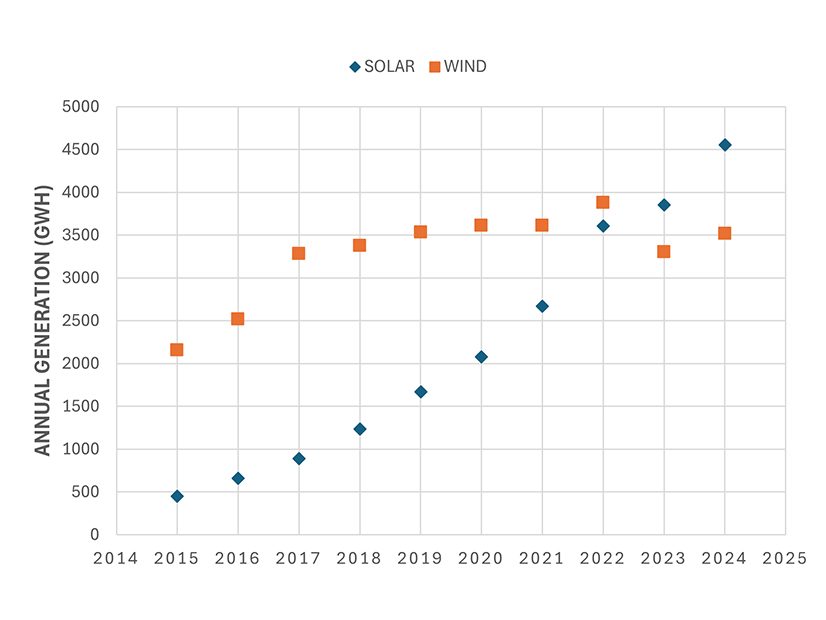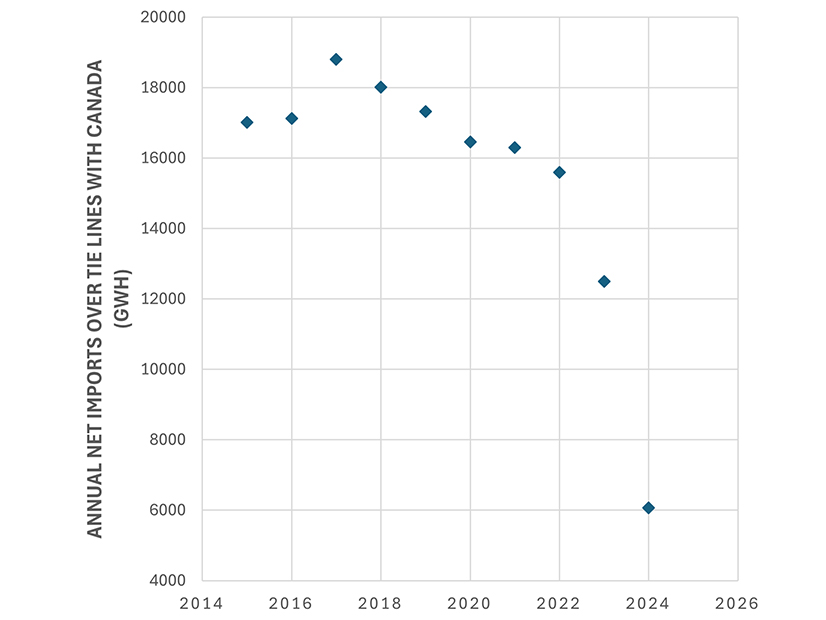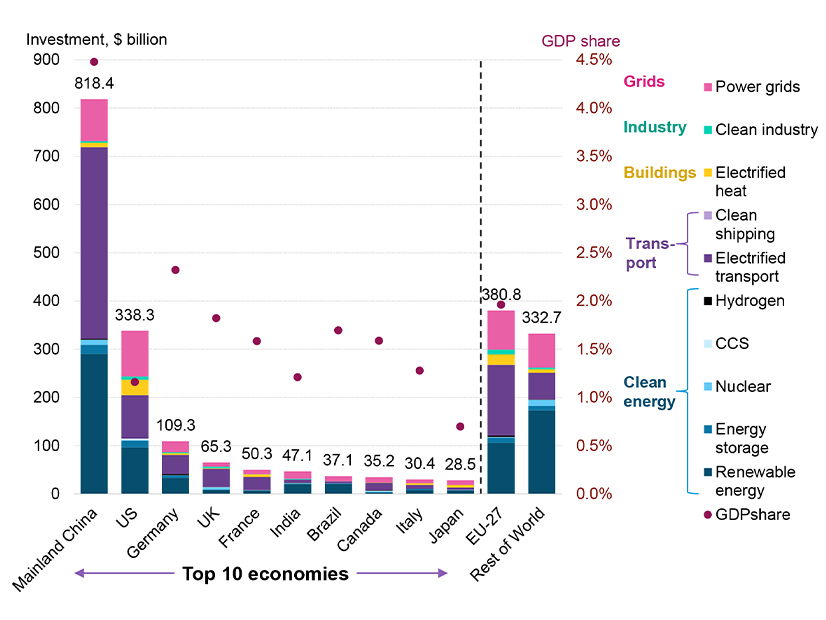The drive to build 765-kV lines in Texas continues to inch forward, with ERCOT and stakeholders working to provide enough information for regulators to reach a decision on which framework to go with by May 1.
During a workshop on extra-high-voltage (EHV) transmission Jan. 27, ERCOT staff shared with stakeholders their “traditional” 345-kV portfolio of projects as part of the grid operator’s annual Regional Transmission Plan (RTP). They also included for the first time a 765-kV study, a result of their 2024 Permian Basin Reliability Plan identifying transmission facilities and import paths needed to serve existing and future demand in petroleum-rich West Texas.
The Texas Public Utility Commission in September approved the Permian Basin plan, which included both 345-kV and 765-kV infrastructure, and $13 billion to $15 billion in initial investment. However, it deferred a decision on the import paths’ voltage levels to no later than May 1, 2025. (See Texas PUC Approves Permian Reliability Plan.)
The commission plans to open a comment period following a Jan. 31 discussion of the two plans. The PUC will host its own EHV workshop March 7 (55718).
“My understanding from working with commission staff is that’s just the beginning of the process,” Prabhu Gnanam, ERCOT’s director of grid planning, told the workshop’s attendees. “All of this to help set up the commissioners to be able to make a decision before May 1.”
Either plan will require thousands of miles of transmission lines to be built through 2030. Both will cost more than $30 billion, according to initial projections, far surpassing the last project of its kind in Texas, the Competitive Renewable Energy Zone (CREZ) initiative completed in 2014. That project resulted in 3,600 miles of transmission lines, built at a cost of $6.9 billion. CREZ has freed up more than 23 GW of wind capacity in West Texas that since has been added to the grid.
The Texas 765-kV Strategic Transmission Expansion Plan (STEP) has an estimated construction cost of $32.99 billion and includes:
-
- 2,468 miles of 765-kV lines.
-
- 649 miles of new 345-kV lines and 1,098 miles of existing 345-kV upgrades.
-
- 324 miles of new 138-kV lines and 1,287 miles of existing 138-kV upgrades.
-
- 446 miles of existing 69-to-138-kV conversions.
The 2024 RTP 345-kV plan has a projected construction cost of $30.75 billion and includes:
-
- 2,673 miles of new 345-kV lines and 1,913 miles of existing 345-kV upgrades.
-
- 334 miles of new 138-kV lines and 1,714 miles of existing 138-kV upgrades.
-
- 647 miles of existing 69-kV to 138-kV conversions.
Both plans will require an estimated $5 billion annually over the six-year planning horizon, as compared to an average of $3 billion per year over 2022/24, the grid operator said.
ERCOT says its analysis indicates the 765-kV STEP would provide “significant economic and reliability benefits” to the system because 765-kV lines are more efficient in moving power from resource-rich regional to load centers over long distances.
The grid operator said last year it expects over 150 GW of demand, more than its current capacity, to be added to the system by 2030. Almost 50 GW of that expected demand is from the oil and gas natural load, AI and data centers, cryptocurrency mining, electrification, and hydrogen processing and related infrastructure.
“If those large loads move from one county to the next, you’re still making that power flow across the state,” Kristi Hobbs, ERCOT’s vice president of system planning and weatherization, told the workshop’s attendees. “Then you can deal with any changes to the large loads through the subsequent underlying 345-kV network that will support it.”
Staff conducted steady-state transfer capability, dynamic stability and system strength analyses to gain a clearer picture of how either option could support reliability and grid stability. Staff said the higher-voltage option would reduce congestion costs by $229 million annually and cut system production costs by $28 million, both annually. (ERCOT has incurred $4.27 billion in congestion costs the past two years.)
The 765-kV STEP would reduce energy losses by 560 GWh each year, equivalent to a 128-MW thermal unit operating at a 50% capacity factor, staff said in its report. It also would yield an increase of up to 3,000 MW in power transfer capability and a 13% stability limit in West Texas.
ERCOT used $6.2 million/mile and $4.2 million/mile as “generic cost estimates” for the 765-kV and 345-kV facilities. The 765-kV cost estimate is based on the same dollar figure used in MISO’s Long-range Transmission Plan, approved in December and including 1,800 miles of new 765-kV projects. The 345-kV number is based on the average cost for new 345-kV lines provided by transmission service providers in the Permian Basin study.
“As we look at the additional transfer capability of the higher-voltage network, which also would be setting us up for future growth as well and giving us some breathing room … the TSPs and stakeholders that try to take outages on the system today can tell you that we have maximized or optimized the use of our current system,” Hobbs said.



